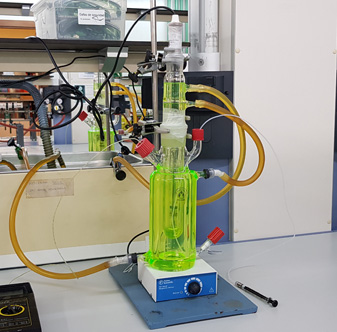
Austrian researcher Martin Karplus, Université de Strasbourg, France and Professor Emeritus at Harvard University, USA, South African Michael Levitt, Professor at Stanford University, USA and Israeli Arieh Warshel, Professor at University of Southern California, USA, were awarded by the Nobel Prize in Chemistry 2013.
In 1970s, the awarded researchers laid the foundation for the powerful programs that are used to understand and predict chemical processes that take place in real life. As highlighted by the Royal Swedish Academy of Sciences, "today the computer is just as important a tool for chemists as the test tube." These computer models have become crucial for the chemistry in the XXI century.
From the point of view of Computational Chemistry, despite the impressive progress in hardware and software, the theoretical study of systems composed by a high number of atoms, such as enzymes, presents certain difficulties. A good description of a chemical process should incorporate the interaction between the reactive subsystem and the surrounding either a polar solvent (usually water) or an environment created by an enzyme. Among all the proposed models, hybrid quantum mechanics/molecular mechanics (QM/MM) methodology has been the approach more widely accepted, which was originally formulated by the Nobel Laureates.
This methodology is based on the description of the reactive region by quantum mechanical methods, QM, while the environment, which is the part that would consume more computational resources, is described by means of molecular mechanics force fields, MM. This treatment uses the quantum mechanical treatment quality to describe the reactive part of the system and the computational efficiency of classical mechanics for the solvent or the rest of the protein.
Therefore, the mechanism of a complex reaction that occurs in a system with a large number of atoms can be followed step by step in detail through computational programs as a movie.
Using this methodology, researchers are able to understand the chemical reactions that take place in biological systems, so we can design new and potent drugs to combat diseases such as Parkinson's, Alzheimer's or cancer.
It is important to point out that Dr. Maite Roca, a membre of the Departament de Química Física de la Universitat de València, made her postdoctoral stay at the University of Southern California under the supervision of one Nobel Prize Laureate, Professor Arieh Warshel, in 2006-2008. During her stay, she had the privilege of learning new techniques to perform computer-aided enzyme design and design new inhibitors as drugs. The results were published in recognized internacional journals with high impact factor and were presented at several prestigious international conferences as oral communication or poster. Furthermore, at the end of her stay she was awarded by “The 2008 Arthur Adamson Postdoctoral Recognition Award” for the scholarly excellence and innovative postdoctoral research.















